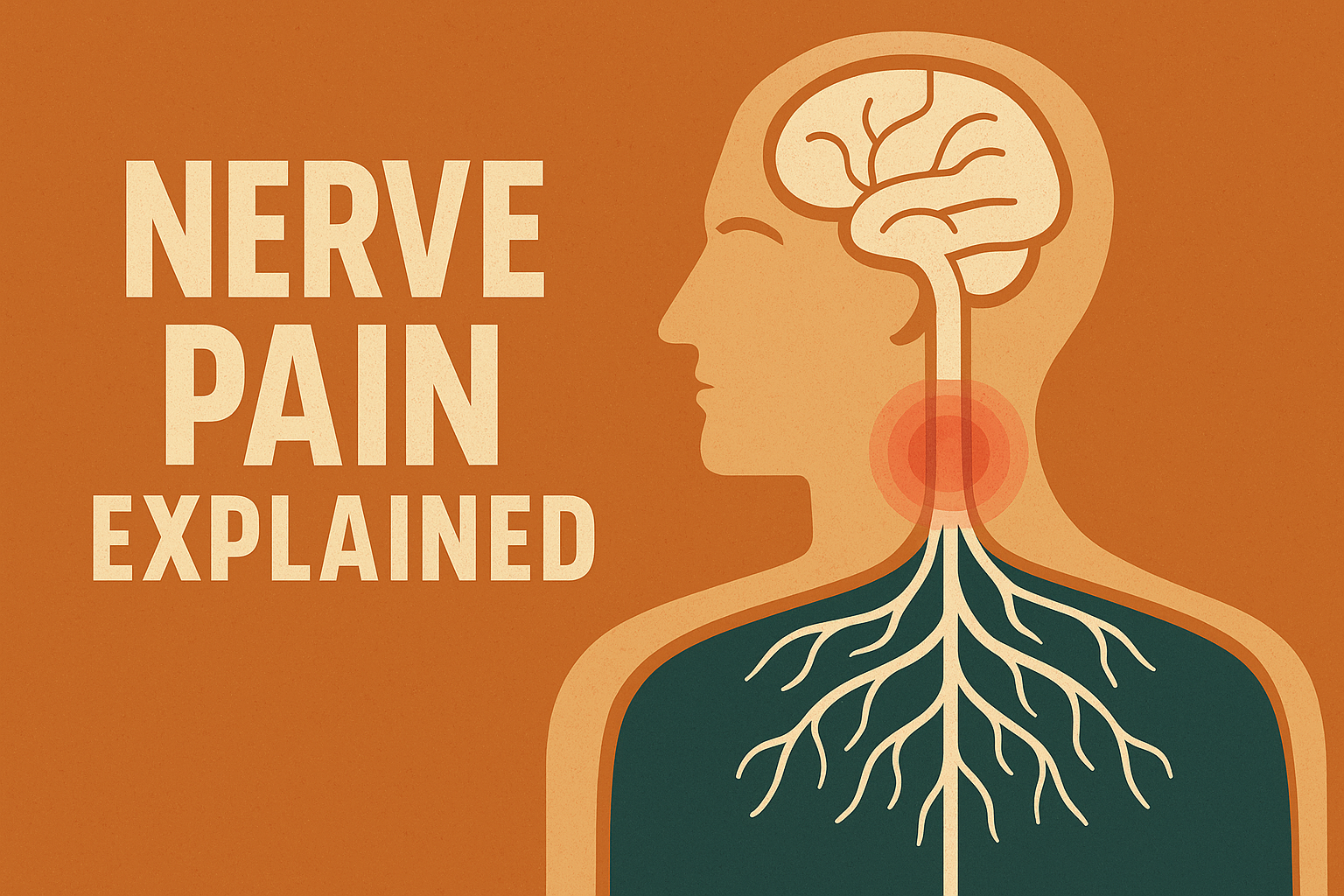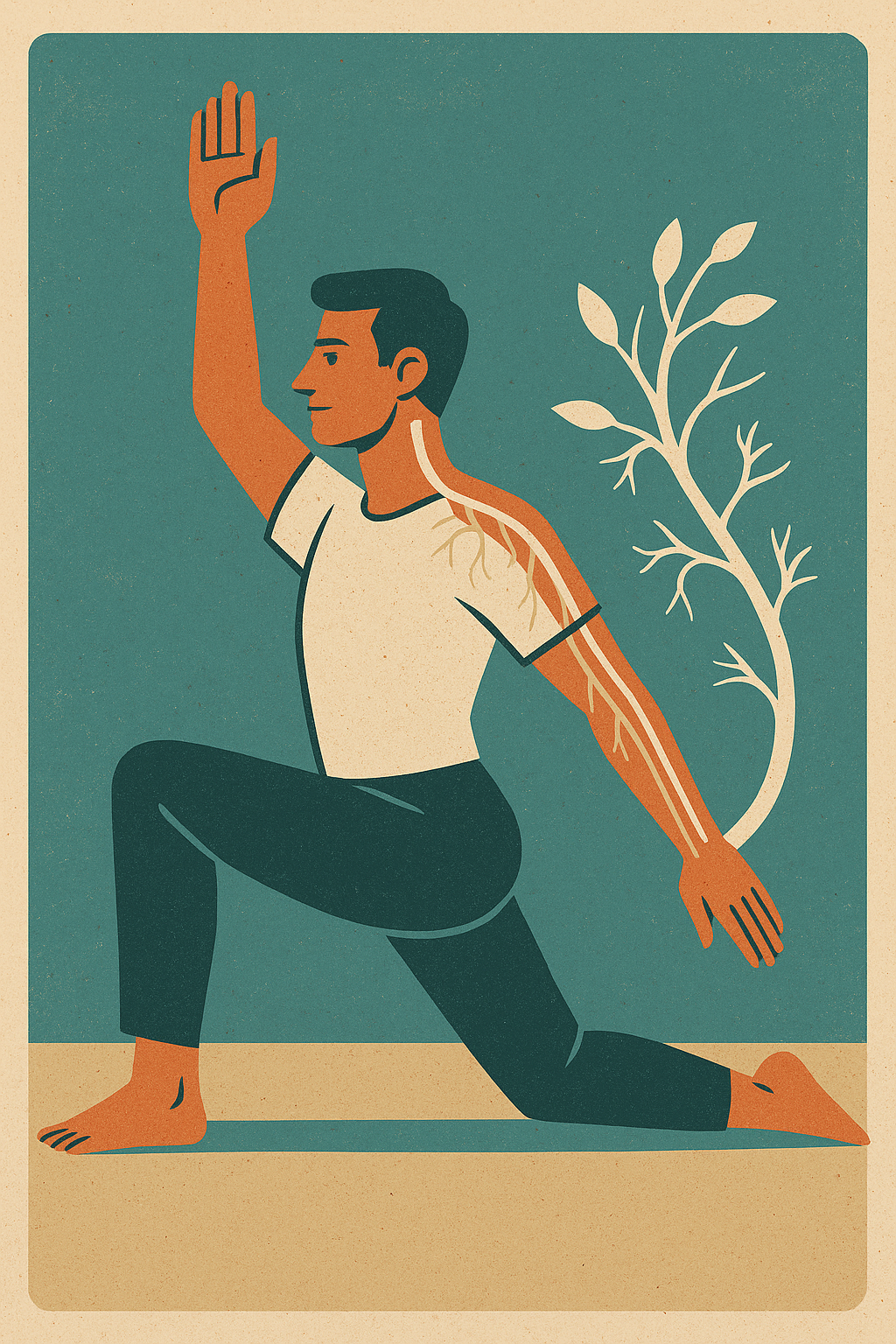Untangling Nerve Pain: What We Learned From Advanced Neuro Training
At Spine & Sports Centre, we believe the best care comes from staying curious, learning constantly, and bringing the newest insights straight to our patients. Over the weekend, we dived deep into the Neuro Assessment and Treatment course – an advanced training that brought together the latest science on nerve-related pain and how to treat it.
This wasn’t just theory. It was about changing how we look at nerve pain, from how it starts, to why it lingers, to the best ways to calm it down.
Why Nerve Pain Doesn’t Play by the Rules
Muscles and joints tend to be predictable — if you overload them, they get sore; if you rest them, they recover. Nerve pain is different.
It can feel sharp, electric, or strangely persistent, sometimes outlasting the original injury. That’s because pain isn’t just a “signal” coming from the body. It’s a perception shaped by the brain.
The course explored how networks in the brain — the default mode network and the salience network (think of them as your brain’s “editors,” deciding what sensations are essential) — can go into overdrive.
When this happens, pain can feel louder and more sensitive than it should. It’s why two people can have the same issue — say a C7 nerve root irritation — and one recovers in weeks while the other is still hurting months later.
How Clinicians Should Assess Nerves (and Why It Matters for Patients)
One of the strongest messages from the course? Good treatment starts with good assessment.
Nerve issues aren’t always obvious — and a quick “tap-the-knee-reflex” check isn’t enough. Instead, a layered assessment is needed:
Rule out the big red flags first. (Conditions that need urgent referral.)
Test sensory responses. This includes reflexes, temperature discrimination (does cold feel different on each side?) and sharp–dull sensation.
Map what’s local vs. widespread. Does the sensitivity sit in one nerve (like the radial nerve in the arm) or is the entire system hypersensitive?
For patients, this matters because it means your practitioner isn’t just asking “where does it hurt?” — they’re figuring out how your nerves, muscles, and brain are talking to each other.
What Is Neurodynamics?
One of the most exciting topics was neurodynamics — a treatment concept that helps “untangle” irritated nerves.
Here’s the easy version: your nerves are like long, delicate cables. They should slide and glide freely as you move. But injury, inflammation, or even prolonged tension (think hours hunched over a laptop) can leave them “sticky” or hypersensitive.
Neurodynamic techniques use movement-based “nerve glides” to restore that sliding ability. Rather than yanking or aggressively stretching, these movements are graded and gentle — often moving two joints in opposite directions — to coax the nerve back into its normal range.
Think of it like tuning a guitar string: too tight and it’s painful, too loose and it won’t function. Neurodynamics finds that sweet spot.
Techniques for Real-World Problems
This isn’t abstract theory — it’s practical for conditions patients already ask about:
Carpal tunnel syndrome: Instead of only splinting or injecting, nerve glides can reduce compression and restore mobility.
Frozen shoulder: Gentle, repetitive “freeing” movements (a concept called Freehab) can calm the nerve irritation contributing to the guarding.
Femoral nerve irritation: A simple sidelying movement test can confirm the issue, and then progressive mobilisation can reduce pain in the front of the thigh.
We also covered radial nerve desensitisation — using carefully sequenced movements like shoulder depression, elbow extension, and wrist flexion — done only within what the patient can tolerate.
Why This Training Changes How We Treat Nerve Pain
For patients, here’s what this means:
We’re looking deeper. If you’ve got tingling, burning, or nerve-type pain, we now have better tools to figure out if the root is in the spine, the limb, or the way your nervous system is processing pain.
We’re treating smarter. Instead of “just stretching” or “just adjusting,” we can use graded neurodynamic techniques that calm sensitivity rather than flare it up.
We’re thinking long-term. Pain beliefs, stress, and lifestyle can all “turn up the volume” on nerve pain. Addressing these factors is part of lasting recovery.
The Big Picture
This training wasn’t about memorising techniques for a weekend and forgetting them by Monday. It was about shifting how we think about nerve pain — and bringing that mindset straight into the clinic.
By combining:
Advanced neurological screening
Movement-based nerve treatments
An understanding of how the brain and body talk
…we can give our patients a more precise diagnosis, a smarter plan, and a faster return to the things they love — whether that’s sport, work, or simply sleeping through the night without that irritating tingle.
If you’ve been struggling with nerve pain, tingling, or “zappy” discomfort in your arms, legs, or spine, our chiropractors are now trained in the latest neurodynamic assessment and treatment techniques. While every case is different, the goal is simple: to calm the nerves, restore movement, and get you back to living well.





